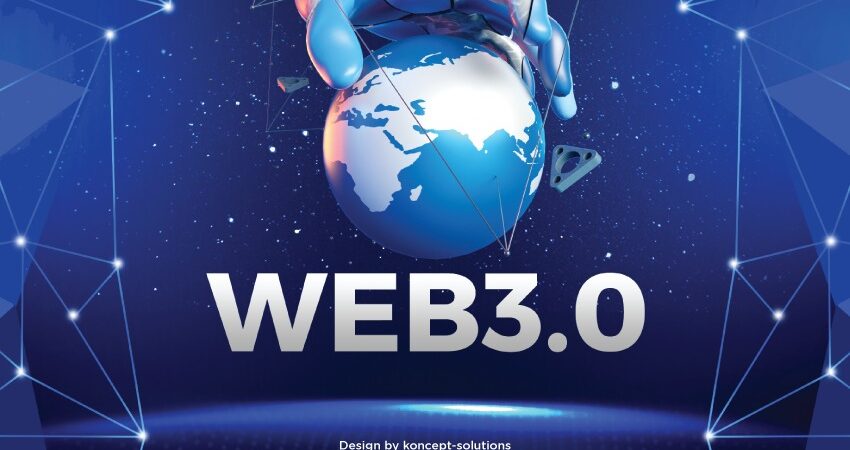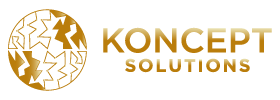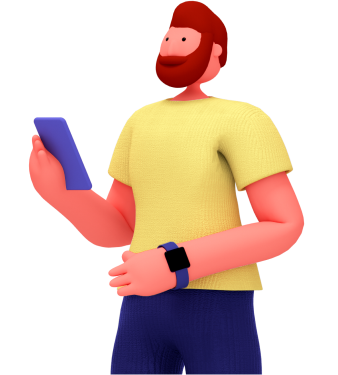
Have you heard of Web 3.0? It is everywhere. The world is already celebrating the new revolution in the field of Web Technologies after the massive success of Web 2.0. Let us discuss What is web 3.0 and how it works.
What is Web 3.0?
Web 3.0 is the 3rd generation change in the field of web technologies. In simple words, World Wide Web also known as just the Web is the opening layer for how the internet is used. It works by providing website and application services.
In general, there is no universally accepted Web 3.0 definition. The information we have is that Web 3.0 will have a robust focus on decentralized applications and make wide-ranging use of blockchain-based technologies. Web 3.0 is going to use machine learning and artificial intelligence (AI) to support and allow more smart and adaptive apps.
Web 3.0 is also linked with the idea of a semantic web. Web Creators have advocated the integration of semantic technology into the Web.
Evolution of Web 3.0
It took decades for technology to evolve from the beginning of the original Web, Web 1.0, to Web 2.0 and now to Web 3.0. Even now the prediction is that it is going to take a lot of time to fully implement and reshape the Web with Web 3.0.
Understanding that if we trace the trend change from Web 1.0 which was a static information provider where individuals read websites but infrequently interacted with them, to Web 2.0. Web 2.0 was an interactive and social web permitting user association. In that case, users can easily imagine what Web 3.0 will change in how websites are made and how people relate to them.
It’s comparatively easy to recognize the important alterations between Web 1.0 and Web 2.0. With the former, users inactively check web pages and, usually, do not create their content. With the latter, users make content and network with websites (and each other) over social media stages, forums, and more. The modifications are not as evidently clear with the Web 3.0 generation of the web.

How does Web 3.0 work?
Let us understand how Web 3.0 works and how is different from the previous versions of the web.
Hypertext Markup Language (HTML)
HTML was used to define the design and delivery of webpages in Web 1.0 and Web 2.0 technologies. Even in Web 3.0, the Foundation layer will be based on HTML however there will be some changes that are distinctive to Web 3.0. It will be different from previous web versions based on how it connects to data sources and where those sources are located in.
Centralized Database
In web 2. 0 most of the applications were dependent on some sort of Centralized Database. This Database would help the websites to share data and to enable functionality. However, in this new version, all the applications and services will use a decentralized blockchain, not a centralized database. The reason behind using blockchain is that there isn’t an arbitrary central authority. Blockchain has a form of distributed consensus.
Decentralized Autonomous Organization (DAO)
Decentralized autonomous organization (DAO) is a new technical concept introduced in the blockchain and Web 3.0 community. DAO means that as a replacement for a central authority that usually administers a platform’s operations, with a DAO, These new web technologies and communities will offer a system of self-authority in making an effort toward a decentralized method.
Cryptocurrency
The major concept of this new technology is to use cryptocurrency rather than fiat currency. Based on the Blockchain Technology Business and the buying and selling of services with a decentralized method of payment are allowed across Web 3.0 using cryptocurrencies.
IPv4 Addressing Space
IPv4 addressing space was used in building Web 1.0 and Web 2.0. Since Web Growth has amplified in the past few years there is a need in Web 3.0 for more internet addresses for that IPv6 is used.
Features of Web 3.0
Web 3.0 is a highly decentralized technology based on machine learning, artificial intelligence, and blockchain technology. The outcome is real-world human contact in web 3.0, the users will keep control over their data and content. They can market or exchange their data without forfeiting their right, endangering privacy, or depending on mediators. The concept of this new technology will allow users to log into a website without tracking their internet identity, that is, the IP Address.
Understanding Tokenization
In Web 3.0, the revolution is the digitization of assets through tokenization. Tokenization transforms assets and rights into a digital replica, or token, on a blockchain network. Cryptocurrency and fungible tokens are the digital currency types used in this technology. Users can efficiently trade across webs. It operates a new business model that personalizes money and business.
Use of NFTS
Non-fungible tokens (NFTs) will be used in the new version of the web. Data units define individual assets like avatars, digital art, or trading cards. These NFTS can be possessed by users and monetized for their income.
Below are eight main features that will allow users to understand Web 3.0.
Blockchain Technology
With blockchain technology, user data is safeguarded and encrypted. It is done to prevent large companies from owning and using users’ data for profit.
Decentralized Technology
Decentralized data networks hold data within a human-to-human interaction. Users claim right over their data and digital assets and can log in securely over the Web without the fear of being tracked.
Edge Computing
Web 3.0 depends on the advancement of edge computing. Edge Computing is a technology in which apps and data are processed at the web edge on mobile phones, laptops, appliances, sensors, and even smart cars.
Semantic Web
The next evolution of the Web concerns the Semantic Web. The Semantic Web enhances the capacities of web technologies to develop, transfer and secure content via search and analysis by comprehending the importance of words instead of keywords or numbers.
Artificial Intelligence
By incorporating semantic capabilities with natural language processing, PC can comprehend data on a human-like level to deliver more immediate and appropriate results. They will become more competent and will reasonably meet users’ requirements.
3D Graphics
Three-dimensional design is used broadly in websites and services on this web. Gallery guides, computer games, eCommerce, geospatial contexts, and more are all typical examples of the use of 3D Graphics.
Connectivity
In this technology, data is more interconnected owing to semantic metadata. The result is that the user experience develops into a new rank of connectivity that uses all functional details.
All-Presence
Web content and services can be accessed through this new technology. The access can be from anywhere at any time through any numeral of appliances instead than only through computers and smartphones. Web 2.0 is universal in many ways, but the growth of IoT devices will take it to new decks.
Trending Web 3.0 applications

Some of the top applications that have Web 3.0 Technology incorporated in them are given as follows:
Wolfram Alpha
Wolfram Alpha is one of the top Web 3.0 applications. It is a result of Wolfram Research. It is a computational learning engine to gather adequate knowledge from databases on the Web to make it open via a sleek user interface.
Siri
You must have heard about Siri. Apple’s Siri is a widespread application of the semantic internet. It has added voice recognition software to make a wave in the technology room. It is assumed that voice recognition software is essential to Web 3.0. This technology will allow web developers and smartphone users to create an environment where machines can articulate with each other. It provides more useful and precise outcomes each time anyone asks a query.
Facebook/Meta Facebook
Meta, generally known as Facebook, is one of the leading social media platforms and Web 3.0 applications. It has constantly been inviting people to make new communities on Web 3.0. These applications vary from games to digital gifts. The range varies according to the preference and choices of users.
Flickr
Flickr is a photo-sharing website. It allows users to explore, design, and upload images and photo albums to communicate with society. Web 3.0 will make it more manageable and quicker to dig for pictures and help in user interaction efficiently.
Conclusion
Koncept solutions have brought you the latest updates about Web Technologies.Web3.0 is not only going to transform the user experience; it will redefine the concept of online business.
The new internet will provide a more private and customized browsing experience, a more innovative and human-like search assistant, and other decentralized advantages expected to help appoint a fairer web.
















